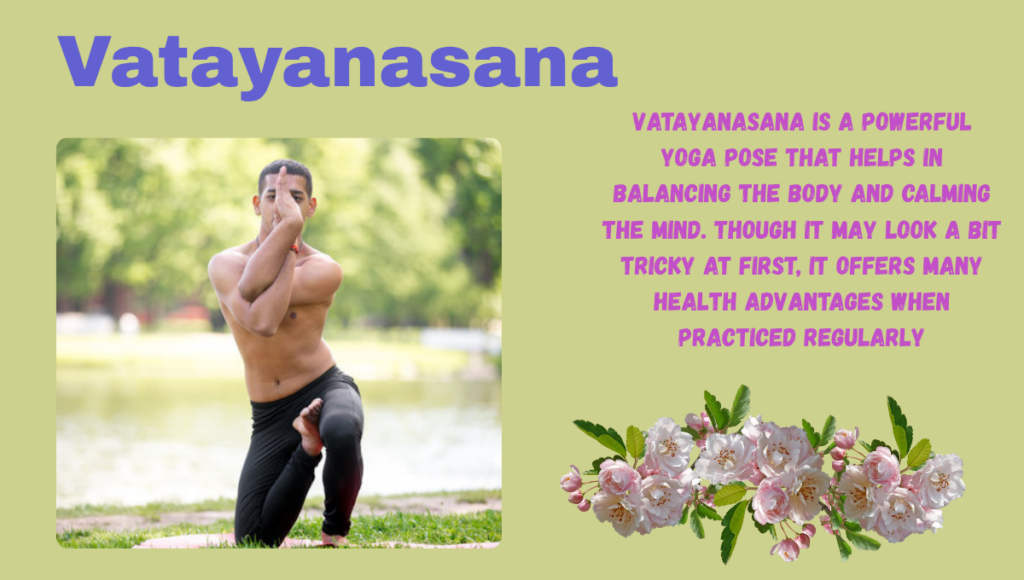Vatayanasana’s benefits__
What is Vatayanasana?
- Another name for the yoga pose Vatayanasana is Horse Pose.
- In Sanskrit, “Vatayanasana” is derived from the words “Vata,” which means wind or air, and “Asana,” which means posture.
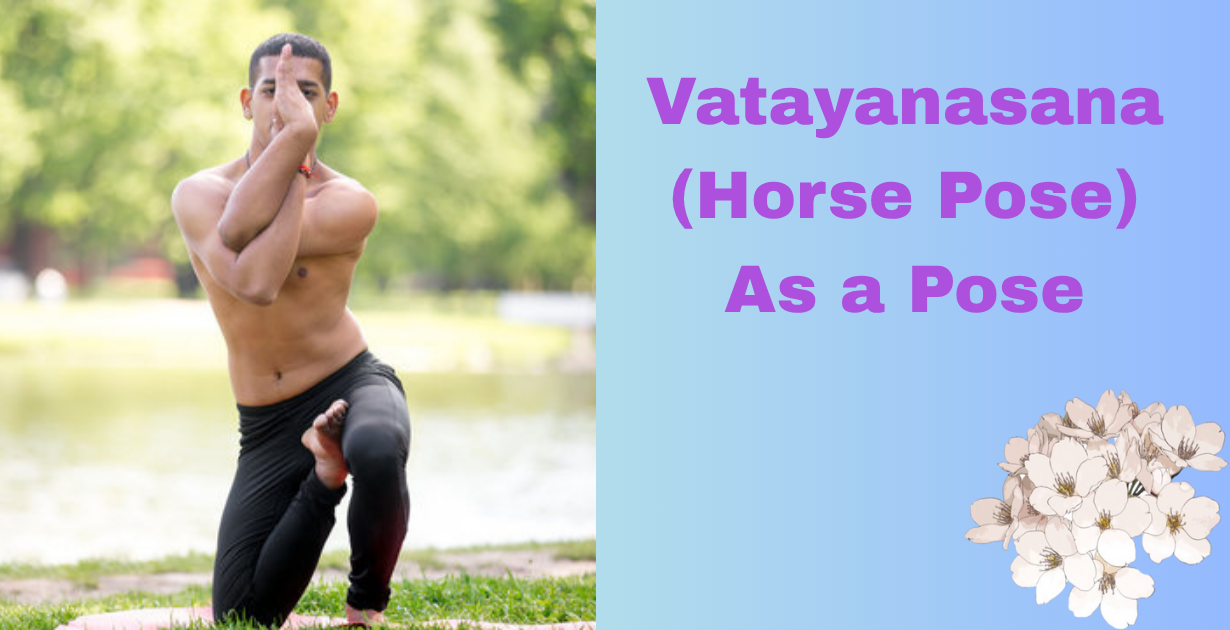
- Because of the horse-like body contour when taking this stance, it receives its name.
- It is a balancing pose in which the hands are united in the prayer position and one leg is bent and placed over the other leg’s thigh while standing.
- At first, it might appear difficult, but with practice, it gets simpler and more efficient.
The muscles in the legs, hips, and spine are strengthened with vatayanasana. Additionally, it enhances focus and equilibrium. It works particularly well to stretch the thighs and free up the hip joints. - “Vatayanasana’s benefits” include better posture, less joint stiffness, and increased body flexibility.
- Additionally, it promotes mental serenity by calming the mind and directing attention inward.
It’s crucial to breathe gently and maintain correct posture when performing this pose. - This position should be avoided or done under a yoga instructor’s supervision if you have any knee or hip issues.
Importance of Vatayanasana in Our Daily Life__
- In our hectic lives nowadays, we frequently neglect our mental and physical well-being.
- Maintaining a calm mind and healthy body can be achieved via daily yoga practice.
- A useful yoga pose is Vatayanasana, also known as the Horse Pose. Even though it’s not as common as some other positions, it’s crucial for enhancing general wellbeing.
- Walking, climbing stairs, and standing for extended periods of time all require strong leg muscles, which vatayanasana helps to cultivate.
- For those who have stiff lower backs or tight hips, this position is quite beneficial.
- Among “Vatayanasana’s benefits” include mental relaxation, improved attention, and increased flexibility. This posture also enhances body alignment and increases endurance when done on a regular basis.
- Physical and mental well-being are equally vital. Pose like Vatayanasana can be a terrific technique to relieve tension as stress and worry become more commonplace in our daily lives.
- This pose’s balancing qualities promote improved breath and mind control, which results in emotional stability.
- “Vatayanasana’s benefits” extend beyond the physical realm.
- Additionally, it promotes inner confidence and self-discipline, all of which are beneficial for one’s career, education, and interpersonal connections.
- Strength, flexibility, and peace—all necessary for a higher quality of life—are brought about by incorporating this asana throughout regular practice.
Vatayanasana: A boon for builds self comfidence__
Vatayanasana’s benefits as Builds Confidence and Inner Strength
- In addition to enhancing your physical well-being, vatayanasana increases your inner strength and confidence.
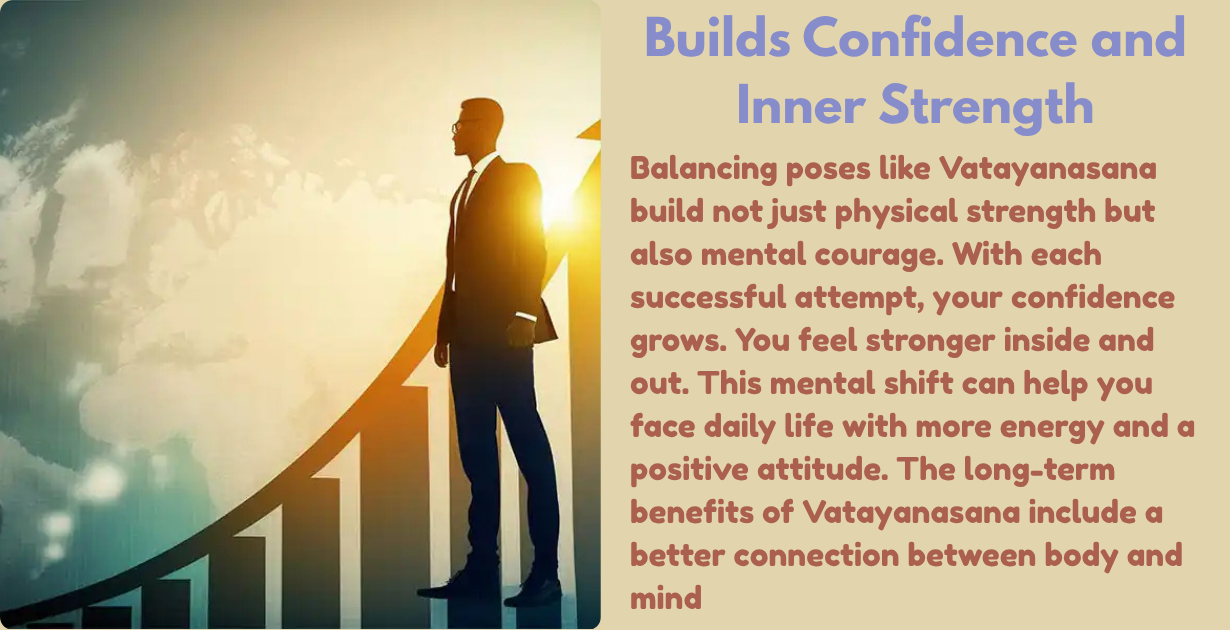
- Both the body and the mind are challenged by this balancing stance.
- Maintaining your balance in the pose teaches you to regulate your breathing and maintain your composure under pressure. This promotes focus and mental organization, which improves self-esteem.
- Feeling accomplished after maintaining the stance is one of “Vatayanasana’s benefits.”
- Your self-confidence increases along with your balance. It demonstrates that you can overcome obstacles if you practice and have patience.
- Enhancing emotional stability is another “Vatayanasana’s benefits.” Regular practice improves your attitude and keeps you grounded when under stress.
- It gives you a sense of serenity and bravery that you may apply to your everyday life.
- This stance makes you feel stronger from the inside out, whether you’re working toward personal objectives or dealing with a difficult day. It promotes a calm and self-assured mentality in addition to a healthy physique.
For Whom is Vatayanasana Necessary?
- For many people, the Horse Pose, also known as Vatayanasana, is a helpful yoga pose.
- It is particularly important for people who wish to enhance their flexibility, posture, and body balance.
- Students and office workers who spend a lot of time at a desk frequently have lower back and hip discomfort.
- Those areas are strengthened and stretched in this stance. This pose is beneficial for dancers and athletes as well since it increases joint flexibility and leg strength.
- Under supervision, older folks can also perform Vatayanasana to maintain active joints and enhance their posture.
- Because the position promotes mental calmness, it is beneficial for those who are trying to improve their emotional equilibrium and mental focus.
- This pose may be especially beneficial for people with bad posture or those recuperating from leg weakness.
- Improved self-awareness, stronger muscles, and improved coordination are some of “Vatayanasana’s benefits.”
- However, this pose should be avoided or only performed under supervision by anyone with hip or knee issues.
- Yoga practitioners who wish to strengthen their body control and balance can also benefit greatly from this pose.
- Vatayanasana is a useful component of any healthy routine since it can provide both mental and physical strength with consistent practice.
Important Precautions About Practicing Vatayanasana__
- Vatayanasana should be done carefully even if it has several health benefits.
- This position should be avoided or performed only under professional supervision by those who have back, hip, or knee issues.
- Beginners should take their time and use assistance if necessary, rather than pushing their bodies into the posture.
- To prevent straining your muscles, warm up your body before attempting this pose.
- Additionally, throughout the pose, maintain your balance and straighten your spine.
- When performed correctly and carefully, “Vatayanasana’s benefits” are most fully realized.
- Therefore, if you experience pain or discomfort, pay attention to your body and stop.
How to Perform Vatayanasana__
- First, stand upright in Tadasana (Mountain Pose) to begin Vatayanasana.
- Place the foot on the inner left thigh of your right leg, which should now be bent in a half-lotus position.
- To keep your body balanced, slowly bend your left knee a little.
- In a praying position, place your palms together in front of your chest.
- To keep your balance, keep your back straight and concentrate on an object in front of you.
- Holding the stance for a few breaths, then slowly releasing them, repeat on the other side.
- Pay close attention to this stance and take your time. At first, it could be challenging, but it becomes simpler with experience.
- “Vatayanasana’s benefits” include increased attention, open hip joints, stronger legs, and better balance. Always breathe calmly and perform it on a level surface.
Another most important Vatayanasans’s Benefits__
Vatayanasana’s benefits for Improving Body Balance and Posture
- The Horse Pose, is a special yoga pose that calls for steadiness and concentration.
- This position enhances coordination by having you balance your body on one leg while folding the other leg.
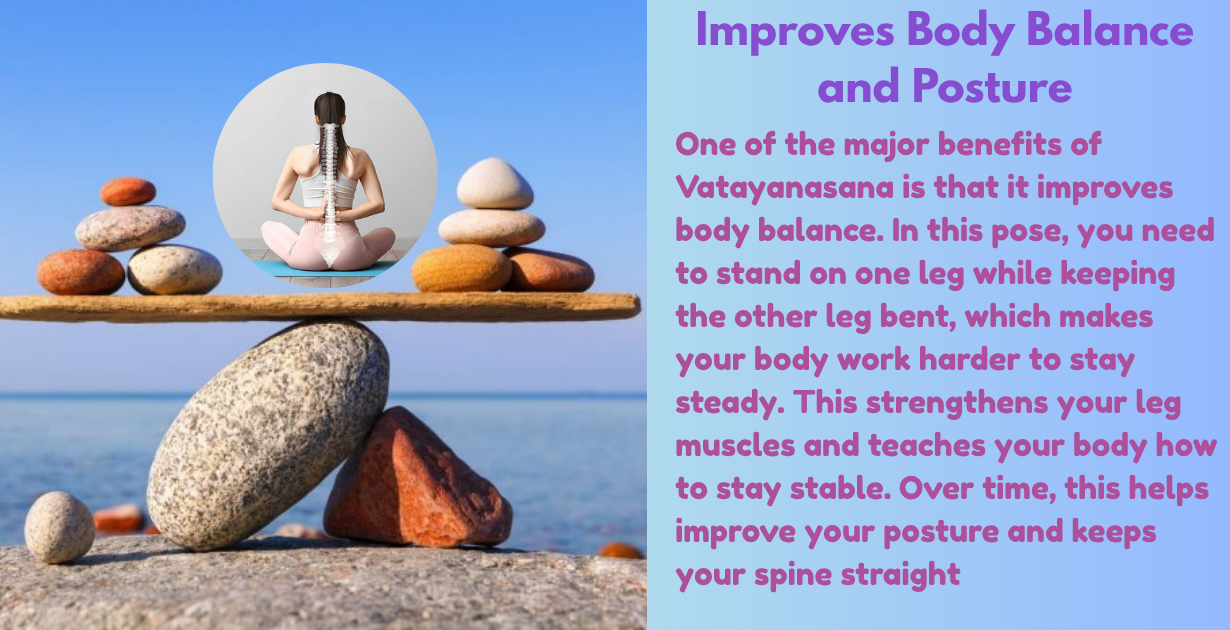
- You can become more conscious of your body’s alignment and center of gravity by adopting this stance. Better posture results from gradually training your muscles to support your body upright.
- Building a good sense of equilibrium is one of “Vatayanasana’s benefits.”
- For those who spend a lot of time sitting, which frequently deteriorates posture, this is extremely helpful.
- Regular practice of this pose strengthens and supports your leg, core, and back muscles. You can stand, sit, and move more confidently and easily as a result.
- This position can help you avoid discomfort from improper alignment and maintain better posture in your daily life, regardless of your age—student, professional, or elderly.
Vatayanasana’s benefits for Improves Digestion and Organ Function
- Enhancing digestion and promoting good organ function are two benefits of vatayanasana.
- Your internal organs, including the stomach, intestines, liver, and kidneys, will be gently massaged by the twist and stretch in the abdominal region as you perform this position.
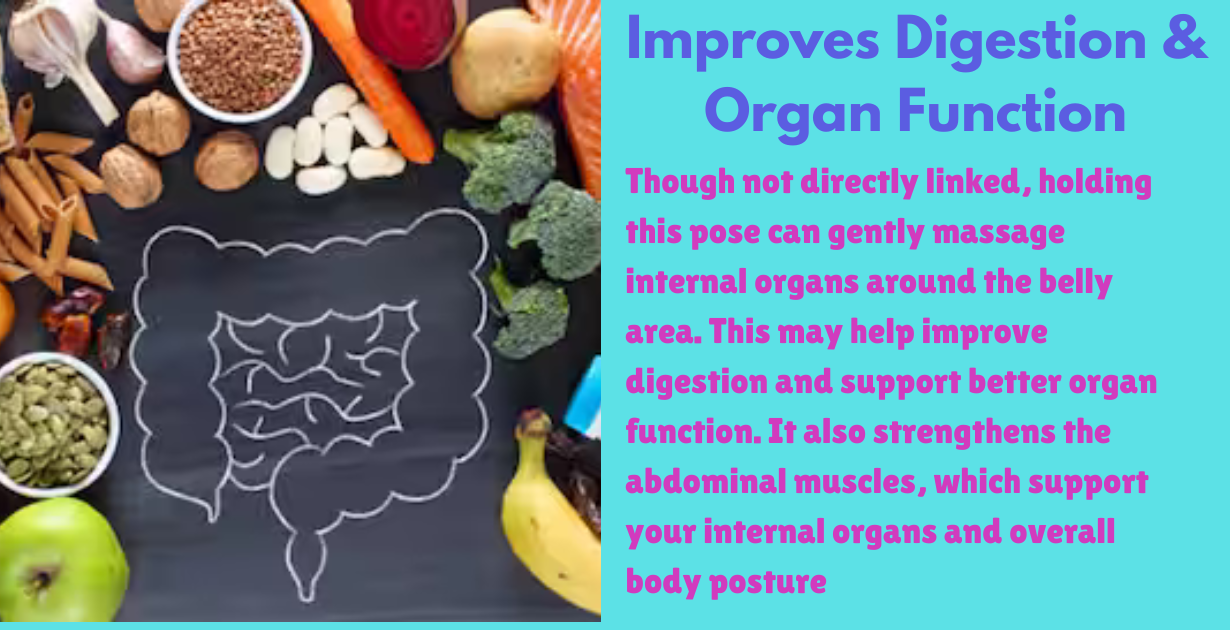
- This encourages improved digestion and enhances their natural functioning.
- Additionally, it can support the appropriate digestion of meals and the elimination of waste by igniting the digestive fire (Agni).
- Constipation, bloating, and gas are common digestive problems that may be resolved with regular practice.
- Furthermore, this position improves blood flow to the abdomen, which supports and maintains the health of the internal organs.
- One of the “Vatayanasana’s benefits” is that it maintains your digestive system functioning properly and aids in the body’s natural detoxification process.
Vatayanasana’s benefits As Increases Focus and Mental Strength
- Not only is Vatayanasana a physical posture, but it also helps to strengthen the mind.
- It takes intense focus and awareness to maintain this balancing stance.
- Focusing on maintaining balance and motion in your body helps your mind become more aware and in the moment.
- By doing this, the brain is trained to remain composed and concentrated in the face of stress or distraction.
The “Vatayanasana’s benefits” include improved mental clarity. - Your capacity to focus at work, school, or on daily duties can be enhanced by consistent practice. In both personal and professional spheres, it fosters inner peace and patience.
- Strengthening one’s inner self is another of “Vatayanasana’s benefits.”
- You develop mental endurance as you get better at maintaining the stance. This facilitates overcoming obstacles without feeling overburdened.
- This asana is an effective way to enhance focus, decision-making, and emotional regulation for professionals, students, and anybody else with a busy mind.
- It promotes mental clarity and self-assurance, which are equally as vital as physical well-being.
Vatayanasana’s benefits for Opening and Stretching Hip Joints
- One useful yoga pose for improving hip flexibility is vatayanasana.
- This pose creates a deep stretch in the hip area by bending one leg in front and stretching the other behind.
- The hip joints’ range of motion is enhanced as they are gently opened in this position.
- People with stiff hips from inactivity or those who spend a lot of time sitting can benefit most from it.
- The reduction of hip tightness and stiffness is one of “Vatayanasana’s benefits.”
- Additionally, it eases lower body tension, which facilitates easier and more fluid motions.
- Regular practice makes the hips more flexible and open, which promotes improved posture and general comfort when sitting, walking, or working out.
- This asana is a safe and natural way to take care of your hips and improve lower-body mobility.
Vatayanasana’s benefits for Strengthening Leg, Thigh, and Hip Muscles
- A potent yoga pose that works the muscles in the lower body is vatayanasana.
- The leg and thigh muscles remain engaged and firm when you hold this pose, which gradually helps them get stronger.
- Additionally involved are the hips, which promote muscular tone and joint stability.
- Building leg strength without the need of equipment or strenuous exercise is one of “Vatayanasana’s benefits.”
- It is particularly beneficial for people who wish to organically increase the power of their lower body.
- Walking, climbing stairs, and other everyday actions get simpler with regular practice. By establishing a strong base for the body, this position also promotes improved posture and balance.
FAQ:
Why is Vatayanasana known as the Horse Pose, and what is it?
Another name for vatayanasana is the Horse Pose since it is a standing yoga pose that mimics a horse’s position. One leg is bowed and crossed over the thigh in this pose, but the other leg stays solid and strong. Frequently, the arms are clasped at the chest or lifted. Like a steady horse, the pose symbolizes power, grace, and balance.
What distinguishes Vatayanasana from other positions that need balance?
Because it integrates muscular engagement, flexibility, and balance into a one pose, vatayanasana is special. In contrast to standard standing postures, this one strengthens the legs and core while also providing deep hip stretches. It challenges both physical balance and mental focus, which sets it apart from simpler standing asanas.
How can body alignment and posture be enhanced with Vatayanasana?
By using the back, leg, and hip muscles, vatayanasana helps to enhance posture. The pose trains the body to maintain appropriate alignment by requiring you to keep your chest raised and your spine straight. This gradually corrects slouching and raises awareness of your posture and gait in day-to-day activities.
For whom should Vatayanasana be avoided?
Unless instructed by a yoga specialist, people with recent hip, knee, or ankle injuries should stay away from this position. It should also be approached cautiously by those who have joint pain or poor balance. This pose should be avoided by pregnant women as it may strain the pelvic area. Always consult a doctor or certified yoga teacher before beginning if you have any medical concerns.
What are the mental health Vatayanasana’s benefits ?
The mental impact of Vatayanasana is one of its lesser-known but potent advantages. It helps reduce mental chatter and raise self-awareness because it calls for concentration and controlled breathing. The position is beneficial for lowering anxiety and increasing self-confidence since it fosters inner strength and patience.
Can novices perform Vatayanasana?
Yes, novices can perform Vatayanasana, but they should begin gradually and seek assistance when necessary. Until their strength and confidence increase, a chair or wall can help with balance. The secret is to avoid hurrying and concentrate on good posture. Beginners will progressively gain the balance and flexibility required to execute the entire position with regular practice.
Which physical advantages come from doing Vatayanasana on a daily basis?
The thighs, hips, knees, and core muscles are strengthened by regular practice of Vatayanasana. It helps tone the legs and increases hip joint flexibility. Additionally, it promotes improved joint mobility, body alignment, and blood flow. Furthermore, the stance can assist reduce lower back strain and enhance balance, both of which reduce the risk of injury during daily tasks.

